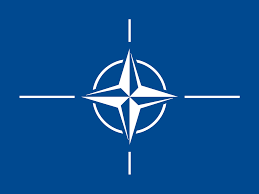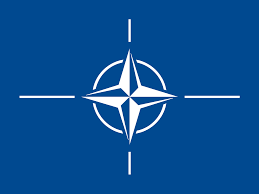
jjjjjjjjjjjjjjj
The United States Army is embarking on a significant strategic pivot, aiming to deeply integrate all-source intelligence into its electronic warfare (EW) operations. This initiative represents a fundamental shift away from the traditional, signal-centric approach to EW that has characterized its doctrine for decades. Instead of merely detecting and reacting to adversary emissions, the Army intends to leverage a holistic intelligence picture to proactively shape the electromagnetic spectrum (EMS) to its advantage. This evolution is a direct response to the sophisticated, multi-layered threats posed by peer adversaries and reflects critical lessons learned from observing recent conflicts where control of the EMS has been a decisive factor.
This move is driven by a recognition that the character of warfare has changed. The post-Cold War era saw a significant atrophy in the Army’s EW capabilities, as the force optimized for counter-insurgency (COIN) operations in environments like Iraq and Afghanistan. In these permissive settings, the primary EW task was often defensive, such as jamming signals to defeat radio-controlled improvised explosive devices (RCIEDs). However, the re-emergence of great power competition has exposed the inadequacy of this posture. Russia’s sophisticated use of electronic warfare in Ukraine since 2014, where it effectively integrated EW with kinetic fires and intelligence, served as a stark wake-up call. Similarly, China’s investment in robust Anti-Access/Area Denial (A2/AD) networks, which rely heavily on an integrated web of sensors and communication nodes, has compelled the Army to rebuild its capacity to fight and win in a contested EMS.
The Strategic Imperative: From Reactive Jamming to Predictive Effects
The core of this new strategy lies in the concept of ‘all-source’ intelligence fusion. This involves synthesizing data not just from Signals Intelligence (SIGINT), the traditional partner of EW, but also from Imagery Intelligence (IMINT), Human Intelligence (HUMINT), Measurement and Signature Intelligence (MASINT), and Open-Source Intelligence (OSINT). By building a comprehensive operational picture, commanders can move beyond simply jamming an enemy radar. Instead, they can understand the context behind the emission: Is that radar part of an integrated air defense system’s search-and-track sequence? Is it linked to a specific command-and-control node? Does its activation pattern indicate an impending attack?
This intelligence-led approach allows for more precise, effects-based operations. An EW asset, informed by all-source intelligence, could selectively disrupt a key communication link at a critical moment to paralyze an enemy’s decision-making cycle, or deceive a sensor to create a corridor for a friendly strike package. This aligns directly with the Army’s overarching operational concept of Multi-Domain Operations (MDO), which emphasizes the synchronized application of effects across all domains—land, air, sea, space, and cyberspace. An EW force that can see and understand the battlespace through an all-source lens becomes a critical enabler for MDO, capable of creating localized windows of superiority for joint forces to exploit.
Key Enablers and Organizational Realignment
This transformation is not merely conceptual; it is being driven by specific programs and organizational efforts. The Army’s Program Executive Office for Intelligence, Electronic Warfare & Sensors (PEO IEW&S) is at the forefront, managing the acquisition of next-generation platforms like the Terrestrial Layer System (TLS). TLS is designed from the ground up with an open architecture to integrate signals intelligence, EW, and cyber capabilities onto a single vehicle. Crucially, its success will depend on the software and artificial intelligence/machine learning (AI/ML) algorithms that can rapidly process and fuse disparate data streams at the tactical edge.
The defense industry is a critical partner in this endeavor, tasked with developing not only the advanced hardware but also the sophisticated data analytics tools required. However, technology is only part of the solution. The Army is also re-evaluating its personnel and training paradigms. The traditional silos separating intelligence analysts (G-2 staff) from EW operators within the operations directorate (G-3 staff) are being broken down. The future force will require soldiers and officers who are multi-disciplinary, possessing the skills to both understand the intelligence picture and employ complex electromagnetic effects. This necessitates a cultural shift and a significant investment in a new generation of training and professional development.
Future Trajectory and Inherent Challenges
Looking ahead, the successful implementation of this vision will depend on overcoming several significant hurdles. The sheer volume and velocity of data generated on a modern battlefield present a formidable technical challenge. Processing this information in near-real-time to provide actionable intelligence to a tactical commander requires immense computational power, resilient networks, and trusted AI that can filter noise from signal without overwhelming the human operator. Ensuring these systems are interoperable with those of the Air Force, Navy, Marine Corps, and key allies within the broader Joint All-Domain Command and Control (JADC2) framework is another layer of complexity.
Analysts expect to see continued investment in AI/ML, autonomous systems, and edge computing to address these challenges. The Army will likely accelerate the fielding of systems like TLS while simultaneously refining the doctrine and tactics, techniques, and procedures (TTPs) for their use. Failure to adapt would risk ceding the electromagnetic spectrum to adversaries, with potentially catastrophic consequences for the Army’s ability to conduct operations. The ultimate goal is a force that does not just operate within the EMS but can dominate it through a superior understanding of the environment, driven by the seamless fusion of intelligence from every available source.
In conclusion, the Army’s push for greater all-source intelligence support to EW is more than an incremental improvement; it is a necessary evolution to meet the demands of 21st-century warfare. By transforming electronic warfare from a reactive tool into a predictive, intelligence-driven capability, the Army seeks to gain a decisive advantage in future conflicts. The path forward is complex, requiring synergistic advancements in technology, organization, and human capital, but it is a path the service must navigate to ensure its relevance and lethality on the multi-domain battlefield.
Source

